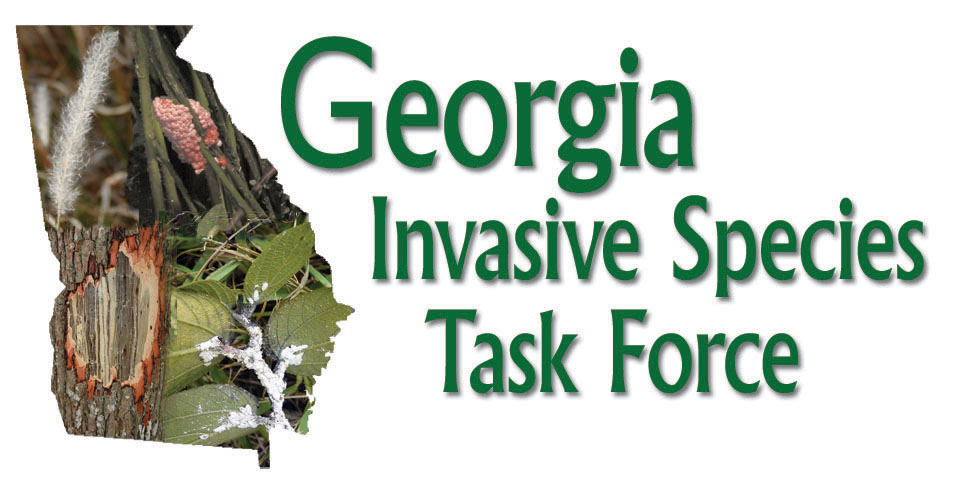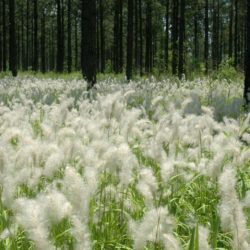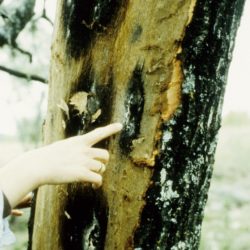I am a Logger or Forester. Why should I care about invasive species?
This publication based on: Midwest Invasive Plant Network. 2008. Why should I care about invasive plants? How invasive plants impact hunting, fishing, boating, gardening, hiking, biking, horseback riding, and other recreational activities in the Midwest. From MIPN.org.
Cogongrass, an invasive grass from Asia, is considered “the seventh worst weed in the world”. It was introduced, accidentally, into Alabama in 1911 as a seed in packing materials from Japan. This species is widespread in Florida, Alabama, and Mississippi and is starting to spread into Georgia, South Carolina, and Tennessee. Cogongrass now contaminates 1.25 million acres in the southeastern United States. It can displace entire communities of native plants and poses an increased fire threat. Cogongrass fires are hotter, faster, and higher than native grass fires. An infestation of cogongrass increases the possibility of the crown of the tree burning which means the tree is killed. When native understory plants burn the trees not only survive but the fire often triggers the trees to release their seeds. Cogongrass is easily spread by root or rhizome fragments. Rhizome fragments of less than 1/4 inch can re-sprout. Eradication is difficult and expensive. Some studies have noted a 20% decrease in timber productivity with cogongrass present.
Several invasive species have impacted the composition of our native forests over time. Butternut canker is caused by the fungus, Sirococcus clavigignenti-juglandacearum, and has caused the death of up to 80% of butternut trees in some states. This fungus infects trees through buds, leaf scars, and other openings in the wood. These infections kill small branch-es quickly. Spores produced on branches flow down the stem, when it rains, causing stem cankers that eventually girdle and kill infected trees. The origin of this fungus is unknown but scientists believe it is a recent introduction to the United States.
Dutch elm disease has been one of the most devastating events in the history of forestry. The disease is caused by the fungus, Ophiostoma ulmi, whose spores are transmitted to trees by elm bark beetles. The elm bark beetle was accidentally introduced to America and Europe from Asia. The disease was first found in the United States, in Ohio, in 1930 and has now spread through the majority of the country. Dutch elm disease has killed over half of the elm trees in the northern U.S. and causes the most harm to American elms.
Gypsy moth, a native of Europe and Asia, is one of the most destructive forest pests in North America. It was accidentally introduced near Boston in the late 1860s. The gypsy moth feeds on the foliage of hundreds of species of trees in the United States, but most commonly on oaks and aspen. Complete defoliation of trees can occur with high densities of gypsy moths present. Tree mortality is possible after several consecutive years of defoliation. Researchers are still unsure of how the gypsy moth invasion will affect forest composition in North America, but the loss of ecologically prominent and economically vital oak species could spell trouble for foresters and loggers.
Chestnut blight canker is a fungal disease caused by Cryphonectria parasitica. The fungus was accidentally introduced into North America around the beginning of the 20th century and by 1940 had caused the death of virtually all the mature American chestnut trees in North America. Chestnut blight can also affect European chestnut and some oak species.
These invasive species have permanently changed the community structure of North American forests.
What can loggers and foresters do to help prevent the spread of invasive species?
- Learn to identify the invasive species in your area. Report any sightings to your county extension agent. The sooner invasive species are detected, the easier and cheaper it is to control them.
- Control invasive species before the start of harvesting activities (this includes raking for pine straw!). Invasive plants spread quickly after a disturbance. Reducing populations before disturbance is the best defense.
- Clean your boots, gear, truck bed, tires, and equipment after working a site to make sure you are not spreading seeds, insects, or spores to a new location.





